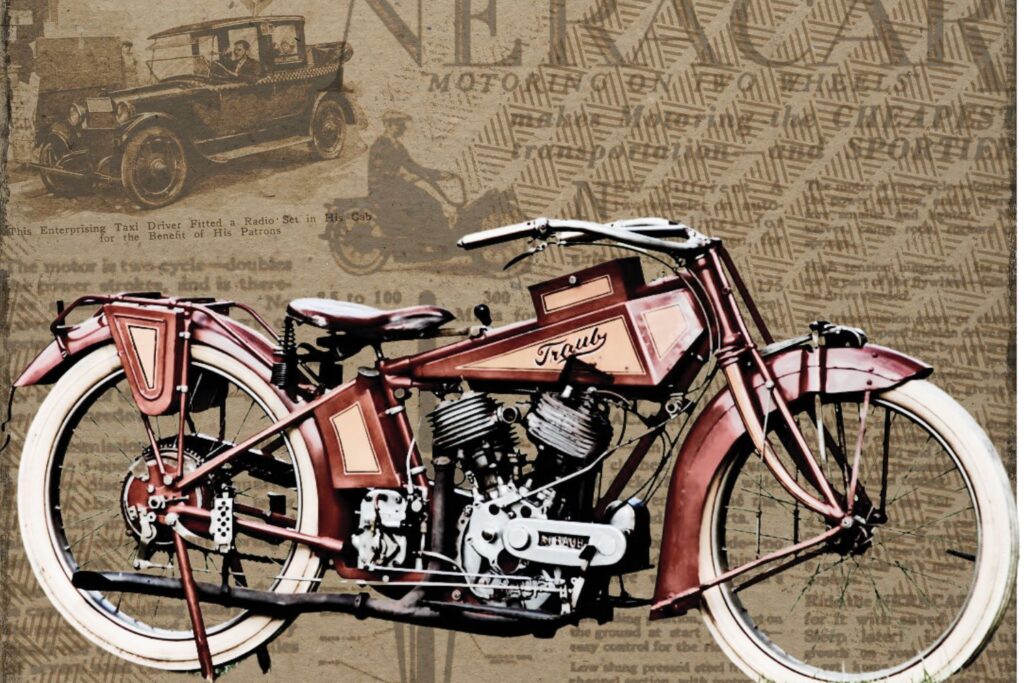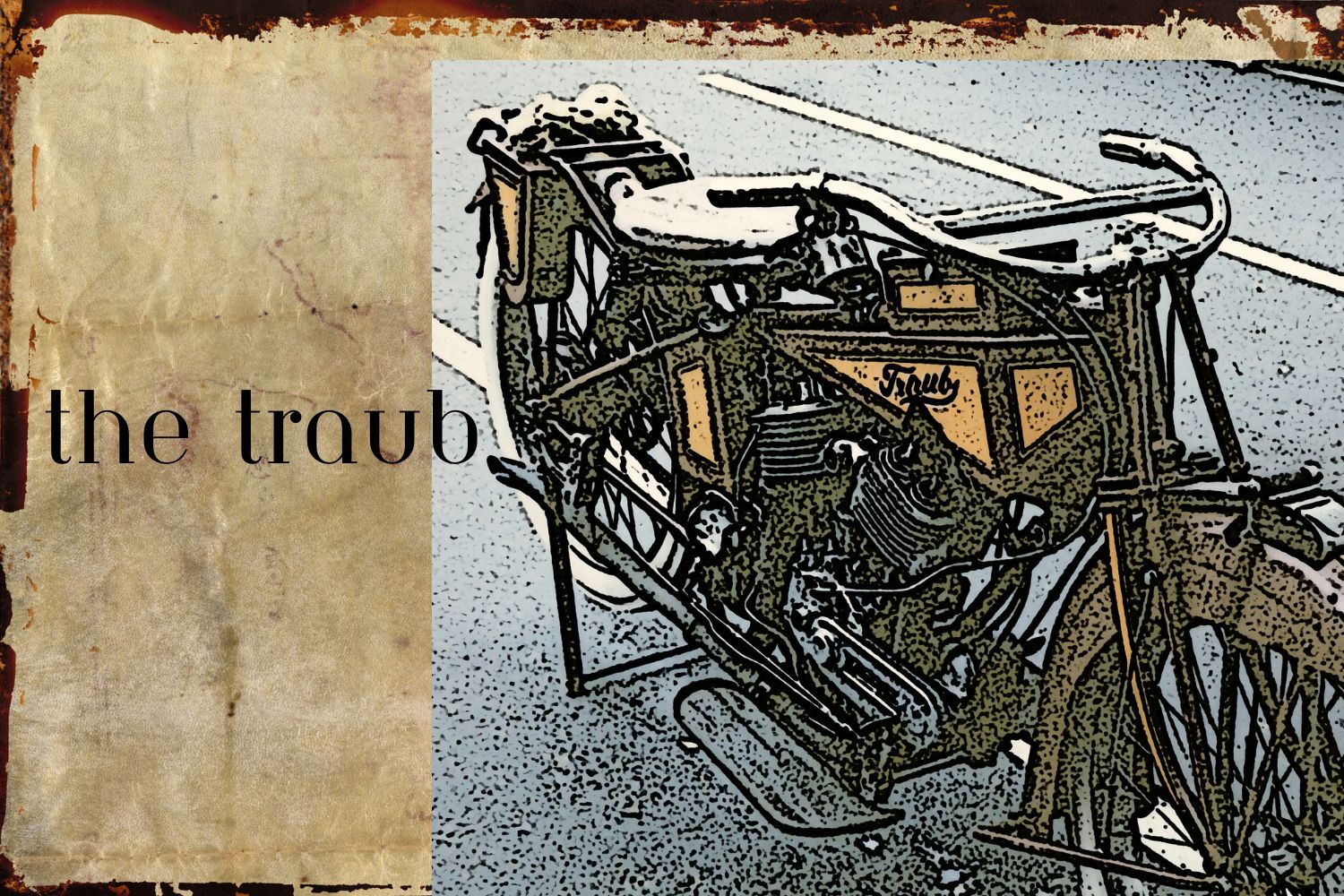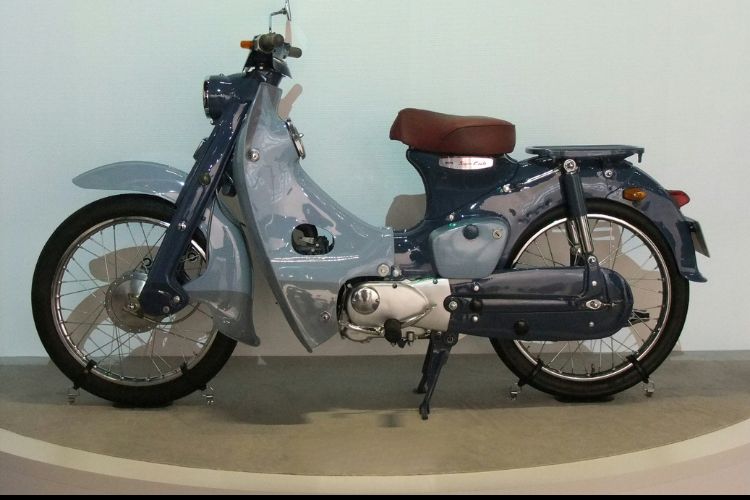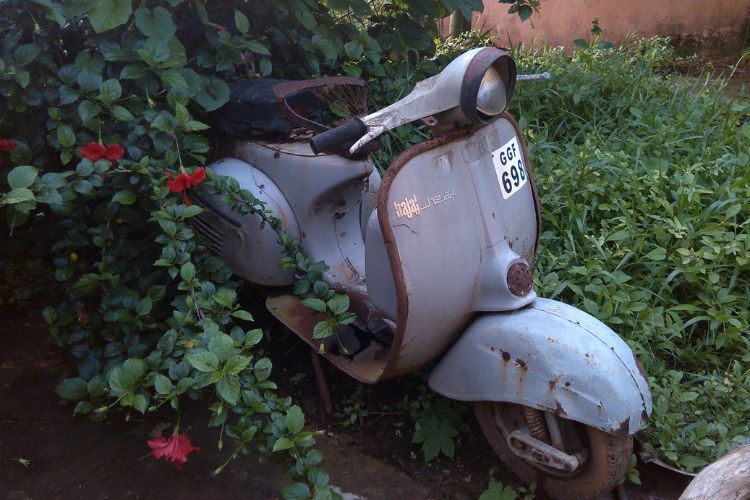Introduction
We love Mysteries and motorcycles; we have found a way to combine our passions to bring you some hidden machines (treasures) from past and present, we will try to reveal as much as we can about the amazing machines you haven’t heard of.
Let’s start this journey with one of the earliest ones; We begin with “The Traub”
Everything has a name. Yes! You may call it unfortunate (or you may not). When a furry animal was found in Central America, the one with a staggering foul stench that can empty a Parliament in a jiffy, that animal was named ‘Skunk’!
Hence let us introduce you to a motorcycle that is considered an intriguing example in all of motorbiking history.
A story begins:
In 1967, a plumber (no record of the name found) was doing the renovation of an apartment building outside Chicago and tore open a brick wall, and what he saw inside was baffling. A vintage one-of-a-kind motorcycle bearing ‘1917’ plates and ‘Traub’ engraved on its side. Weird isn’t it, motorcycle in a wall? WoW
Let’s rewind the clock to 1907.
Gottlieb Richard Traub was born in America, he was of German descent. Correspondence from a “Richard Traub” to the editor of Motorcycle Illustrated was printed in July 1907. In The author of the letter lists his address as North Paulina St., Chicago, and he talks about his homemade four-horsepower motorcycle.
In the letter He writes:
“Dear Sir – … find the enclosed picture and specifications of a motorcycle made by myself throughout engine and all. I worked on this cycle for about one year, putting in the time only between 7 pm and 11 pm. I also worked on Sundays.
Specifications – Wheelbase, 55 inches; tank capacity, 3 1/2 gallons gasoline, 1-gallon oil, sufficient for 125 miles; power, 4 horsepower; bore and stroke 3 1/4 by 4 inches; auxiliary gasoline tank, 1/2 gallon; speed, more than the roads will stand; perfect grip control; throttle and spark motor is geared 3/4 to 1; it has a cycle chain with washers, and does good service; has never troubled me yet, and I rode all of 1,500 miles.”
The Motorbike belonged to Gottlieb Richard Traub.
Returning to 1967, The plumber complained, After questioning, The building’s elderly owner admitted, his son had stolen the bike before he went to fight in WWII, never to return.
The Motorbike was refurbished, and the Traub was bought in 1972 by Bud Ekins, famous as Steve Mc Queen’s stuntman. Ekins later sold the Traub to collector Richard Morris, who then sold it to Dale Walksler (Every enthusiast must and should know this premium bike collector) in the mid-1990s.
The Traub is now one of the “crown jewels” in Walksler’s collection of 240 classic American motorcycles. And believe it or not, it gets ridden regularly: Dale has even had the engine taken apart to cure a knocking noise that turned out to be a worn-out connecting rod bushing.
Ask him about the components inside the engine, and he’ll tell you with great enthusiasm, everything inside the engine is just magnificent. The pistons are handmade, they have gap-less cast-iron rings. The engineering and machining are simply years ahead of their time.” During the reassembly process, the only parts Dale had to fabricate were the base gaskets. The bike doesn’t use any other gasket anywhere in the engine, as it is so perfectly machined. This is one significant indicator; this was not a mass-produced machine.
Power is provided by a beautifully crafted 78ci V-twin engine with a 4in stroke and a 3 7/16in bore, yielding an engine capacity of 1,278cc, which was large for the time. Most big displacement motorcycle engines from the Traub’s era were around 1,000cc (61ci). Using a side-valve arrangement, the top of the cylinders feature a gas primer valve, although Dale notes this is not an unusual feature. What is unusual, however, is the adjustable crankcase breather and the engine fasteners, which are unique to the Traub and whoever built it.
After enduring an adventurous ride, it currently resides in the ‘Wheels Through Time Museum in Maggie Valley, North Carolina, maintained by Dale Walksler in safekeeping.
This intro has generated curiosity in our minds and a lot of questions pondering in our heads, how did they make it, was it the first performance bike?
We are going to explore more, we are making a part 2,
you can help us, give us more details, write comments, or share with someone who knows?








